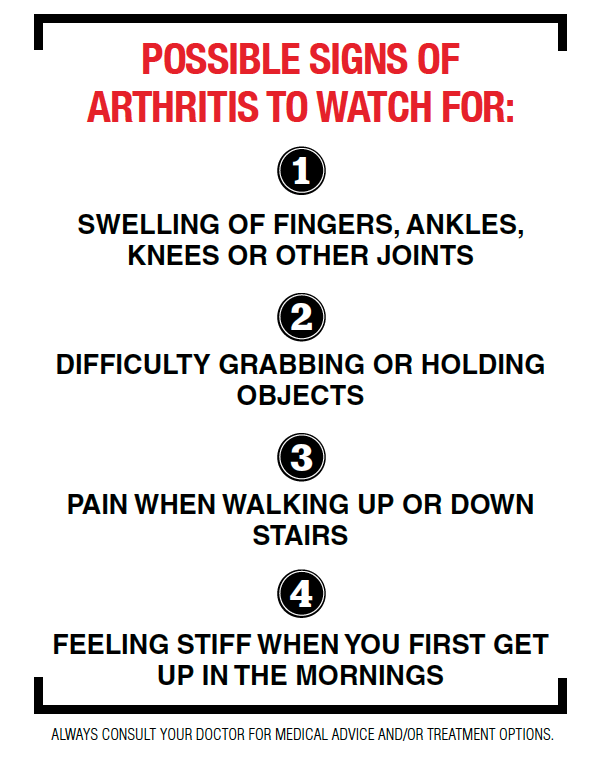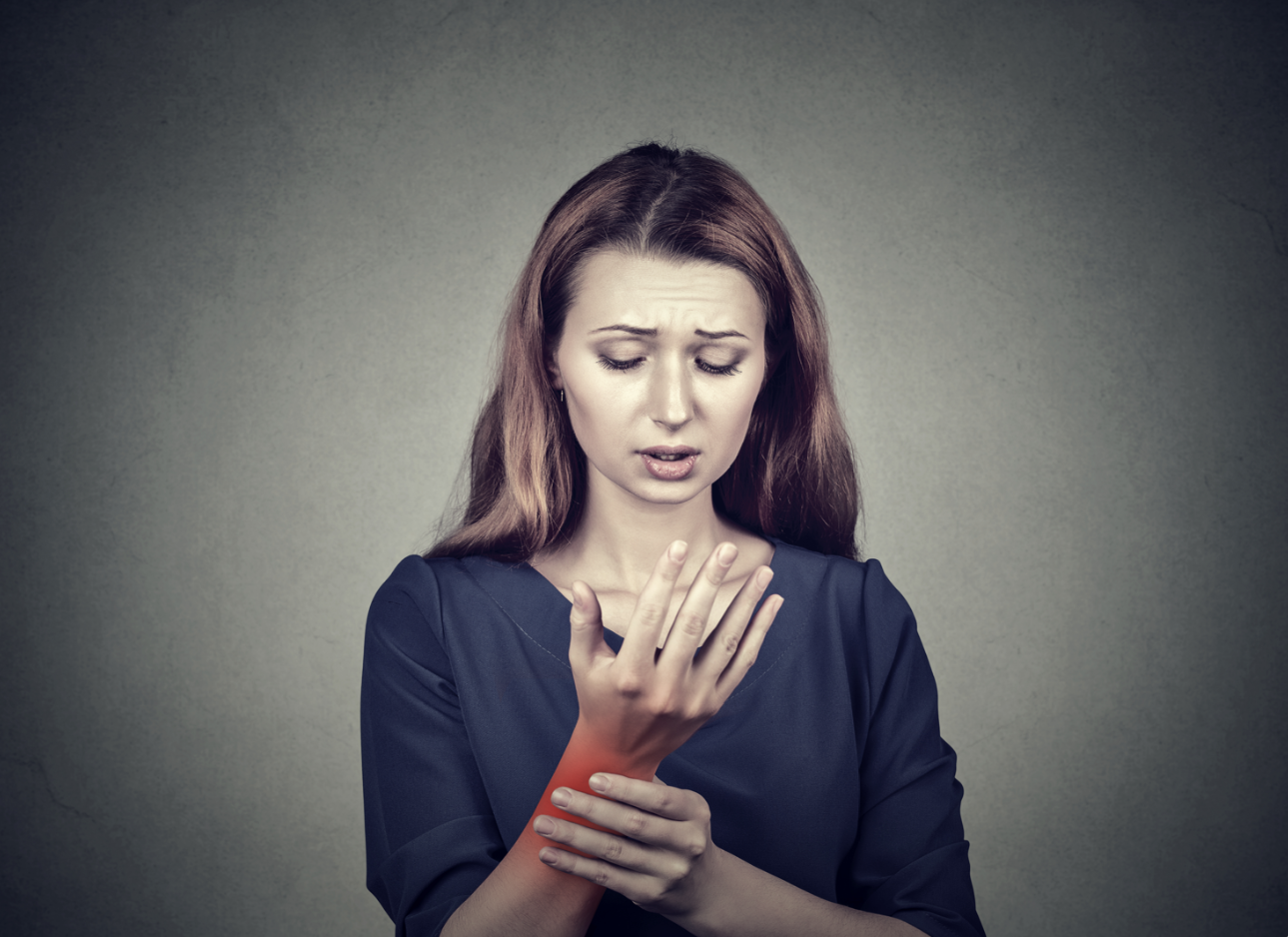May is Arthritis Awareness Month – the perfect time to hear from someone who was diagnosed with arthritis at 28.
It started with a bump on the inside of my palm underneath my ring finger. A week or so later, another bump appeared underneath my other ring finger. It was odd, but I kept thinking that the bumps were actually calluses since I had been lifting weights more often. That was 18 years ago. At the time, I had a 2-year-old and a sometimes-colicky newborn. I was juggling everything. I would be bouncing the crying baby with one hand while stirring a pot of simmering oatmeal with the other. Often the 2-year-old was attached to my leg. All the while I was starting to feel some discomfort in my hands. Did I have arthritis at 28???
As time went on, that discomfort began to move to my right ankle and then to both knees. What was going on? I finally decided that something wasn’t quite right and that I should see my doctor. My husband also agreed it was time for someone else to take a look at me.
My Story
I will not bore you with every detail. The short version of this very long story is still complicated, to say the least. My husband was friendly with a hand surgeon, so I saw him first. After examining my hands, he decided I should see my regular doctor. Weeks later, I saw my general practitioner. She did a thorough physical exam and then ran a plethora of blood tests. Once the results were in, she decided I needed to see a rheumatologist. What? I was only 28! I couldn’t have arthritis. That was only for older people.
It took a while to get in to see the rheumatologist. She did another thorough physical exam, ran a ridiculous number of blood tests and asked an unfathomable number of questions. Everyone was trying to rule out whatever was possible. The final diagnosis? Arthritis.
Managing Arthritis
During this 10-month period, I was in a great deal of pain just doing everyday “nothings.” It hurt to sign a check. It hurt to steer my steering wheel. It hurt to tie my children’s shoes. Everything was hurting and, at the time, I saw no end in sight. It was extremely depressing.
I tried countless different medicines. There was methotrexate, Mobic, Celebrex, Vioxx and many others. Each new medicine came with its own uncomfortable side effects. I kept a medicine log just so I could keep it all organized. Nobody could help me. My husband was in the middle of his surgical residency. He was at the hospital all day, every day. He would sleep there every third night depending on the service he was on. At times he would need to sleep there every other night.
We did not live near family and were new to the area with few friends. I felt very alone. I was trying my best to take care of my beautiful babies and our little house. Grocery shopping for the average mom of two young children is challenging in and of itself. How could I shop when I could barely walk, drive my car or even lift my kids to put them in the cart? Something had to change.
Finding the Right Medicine
Finding the right medicine at the right time saved me. I had to muster more patience than ever as it took a full four months to notice any difference in my pain level. By six months I felt like a new person. It was an absolute miracle!
Being in so much pain and having such difficulty walking around had put 20 pounds on my petite frame. I did not recognize myself in clothing and shuttered when I would see myself naked in the mirror. Immobility had caused this weight gain, but my drive and determination would banish it!
Within a month, I lost 5 pounds just by walking around doing my everyday “stay-at-home-mom” chores. Yes, finally! It was time to start moving even more. It was time to start going on walks with my double stroller. It was time to play ball with my kids at the local park. It was time to join a gym!
Getting arthritis at 28 did not break me. In fact, in many ways I feel it saved me. Because of this disease, I am always careful when I work out. Nothing is done in haste. Well, most of the time. I’m not perfect, you know.
How I am Today

Keeping my weight down feels better on my tender joints, and I am sure that eating well has positively impacted my life, my husband’s life and my children’s lives. I am also certain that regular exercise has saved me. It is this combination that has become my daily life and routine.
Perhaps I would not care about eating well or exercise had I not received my diagnosis. Maybe I would not care about reading the nutrition labels on every product I buy. Maybe I would not be as appreciative as I am for having my quality of life back.
Here I am, 18 years later, with two amazing teenagers and a 20-plus-year happy marriage. Getting arthritis was not the worst thing, and I am positive that it has truly strengthened me. It’s not that I have arthritis and I live with it. It’s that I live with arthritis and I am really fine with that.
HELPFUL TIPS TO MANAGE DISCOMFORT
- Gently stretch before leaving your bed in the morning
- Apply heat to affected areas
- Use slight modification when doing painful everyday tasks
- Sit in a warm bath for 20–30 minutes
- Massage swollen joints gently
- Consider talking to your doctor about medication
** Please note that these tips will also help ease the pain that can come with colder climates. Some have weather-affected pain while many do not experience a change in discomfort. I have also used a heating pad to help with a particularly painful joint. **
I’VE LEARNED NOT TO DO THE FOLLOWING:
- Be mad at yourself for not being able to do something like you used to
- Do things too quickly — take things slowly so as not to aggravate affected joints
- Not exercising as often as you did before you were in pain
- Be angry with yourself for asking for a little help now and then
Related articles
4 Reasons Why Diet Soda Shouldn’t Be Part Of Your Diet
Add These Workouts You Can Do At Work To Your Daily Routine
Iconic Foods In The US: Must-Try Foods From The West!
Should It Be That Color? Decoding The Color Of Our Urine

